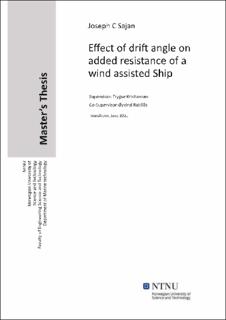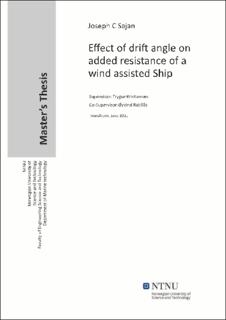| dc.description.abstract | Wind assisted propulsion vessels have presented itself as a revolutionary alternative to reduce emissions in a vessel. With the increasing regulations on emission control, many companies have started adopting wind assisted ships into their fleet. With increasing demand so does the need for a deep and better understanding on various aspects of such vessels especially into the operational aspects.
This thesis aims at Estimating and analysing the added resistance of a wind assisted vessel and the contribution of drift angle seen in such vessels to added resistance. This is achieved by an experimental study using a wind assisted bulk carrier design, "SOShip" designed by SINTEF Ocean, in various wave conditions simulating a wind assisted vessel with a drift angle of 9 degree and conditions without a drift angle. Followed by a Numerical analysis using state of the art numerical panel codes used in the industry such as WAMIT,VERES3D and VERES (ShipX). The numerical study also aims at creating an outlook on the capabilities of various numerical codes and methods used within the codes to predict first order motions (heave and pitch) and added resistance in various wave conditions. The thesis also includes a brief theory on how to find first order solutions, second order mean drift forces and also covers some particular aspects in the theory used behind each of the numerical code which are of interest for the study.
The experimental study concludes that a drift angle increases the added resistance by 5-10% and the numerical study concludes that a drift angle of 9 degree causes less than 5% increase in added resistance. The Experimental estimation of added resistance for shorter waves poses large uncertainty which makes it difficult to make conclusions about added resistance in short wavelengths and also to validate the numerical results. At zero Froude number experimental added resistance estimation and numerical estimation are in good agreement. WAMIT V7 well predicts the effect of tank walls in added resistance for zero speed test conditions. At forward speed the added resistance curve along the wavelength found experimentally has a shift to the direction of smaller wavelengths in comparison to the numerical results. At following sea conditions all the numerical codes predict an added thrust in most of the wavelengths which contradicts the experimental results. The numerical results for added resistance in forward speed is observed to be sensitive to the changes in the panel model of the vessel which can generate misleading estimations. | |

